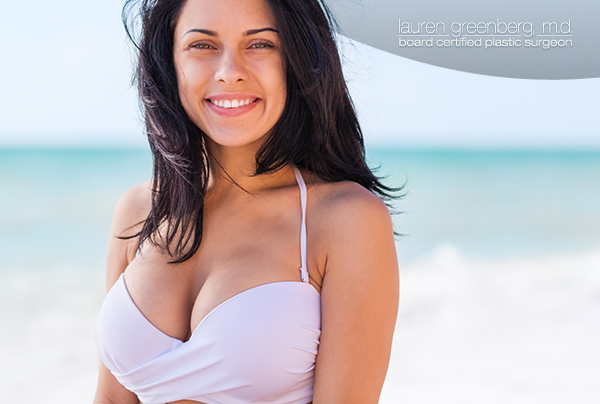 When women come in for a breast reduction, the first question is “what is your current breast size?” The next question is “What size do you want to be?”
When women come in for a breast reduction, the first question is “what is your current breast size?” The next question is “What size do you want to be?”
Answers I hear frequently.
- “I want them to be proportional”
- “I want them to still be full, but smaller”
- “I want them gone.” Sayonara. Bye bye.
When your breasts are large, I can understand why some of you want them gone. I get it. You are tired of them. They have kept you from jogging; you can’t find tops which fit; people talk to your chest; and you have no idea what wearing a sundress would be like. You may think women who want their breasts larger are nuts.
But you need to consider how small do you really want to go.
- There are some surgical limitations to how small I can make you. When we do breast reduction surgery, I do a pedicled flap. I know it is fancy doctor terms, but the pedicle is the blood and nerve supply to the nipple. It is what keeps the nipple alive. The droopier you are, the longer the pedicle, the more I have to leave to maintain the blood supply.
- Look at the rest of your body. Are you hippy? Do you have a belly? Large breasts can mask a bunch of things, and make women look “curvy” instead of pear shaped, bottom heavy, etc.
- Am I changing your ribcage size? I can’t change your ribcage. But there is fat on the bra strap area for some women with large breasts. When I do my breast reduction surgery it is common for me to do liposuction of the axillary roll (bra strap area). This may drop you from a 40 bra to a 38 or 36. When you change ribcage size, your cup size changes. A 36B of volume becomes a C cup when you are a 34.
- Focus on cc’s and how it looks, not cup sizes. There is no standard to cup sizing. What is a C in one brand is not in another.
- Are you wearing the right bra now? Many of my patients are wearing the wrong bra because the right sized bra is impossible to find. So if I drop someone from a DD to a D and they look dramatically smaller, they likely weren’t really a DD before surgery. I also see women wearing a bigger ribcage size (a 36 when they should be in a 34) because they can find a 36DD bra, when they can’t find a 34DDD bra.
- Vectra 3D imaging is helpful. I can’t simulate what a reduction looks like, only the lift, but I can get a basic assessment of the volume of your breast before we start, and show photos of “after” breast reduction results so you can see the change.
For patients who are undecided, I tend to aim for a C/D border. For those who want to stay on the fuller side, I am for DD. Usually an A or B cup is not an option for my droopy patients. If you aren’t droopy though, it could be possible but may not be recommended. I will show you photos, and many of my patients are surprised at what a 34D really looks like. (They think it is a B cup because it s narrower, perky, and “small.”)
When I meet with you I will review all the pros and cons of size.
The information provided on this website is for general informational purposes only and does not constitute medical advice, diagnosis, or treatment. Always seek the advice of a qualified healthcare provider for any questions regarding your health or medical condition.
